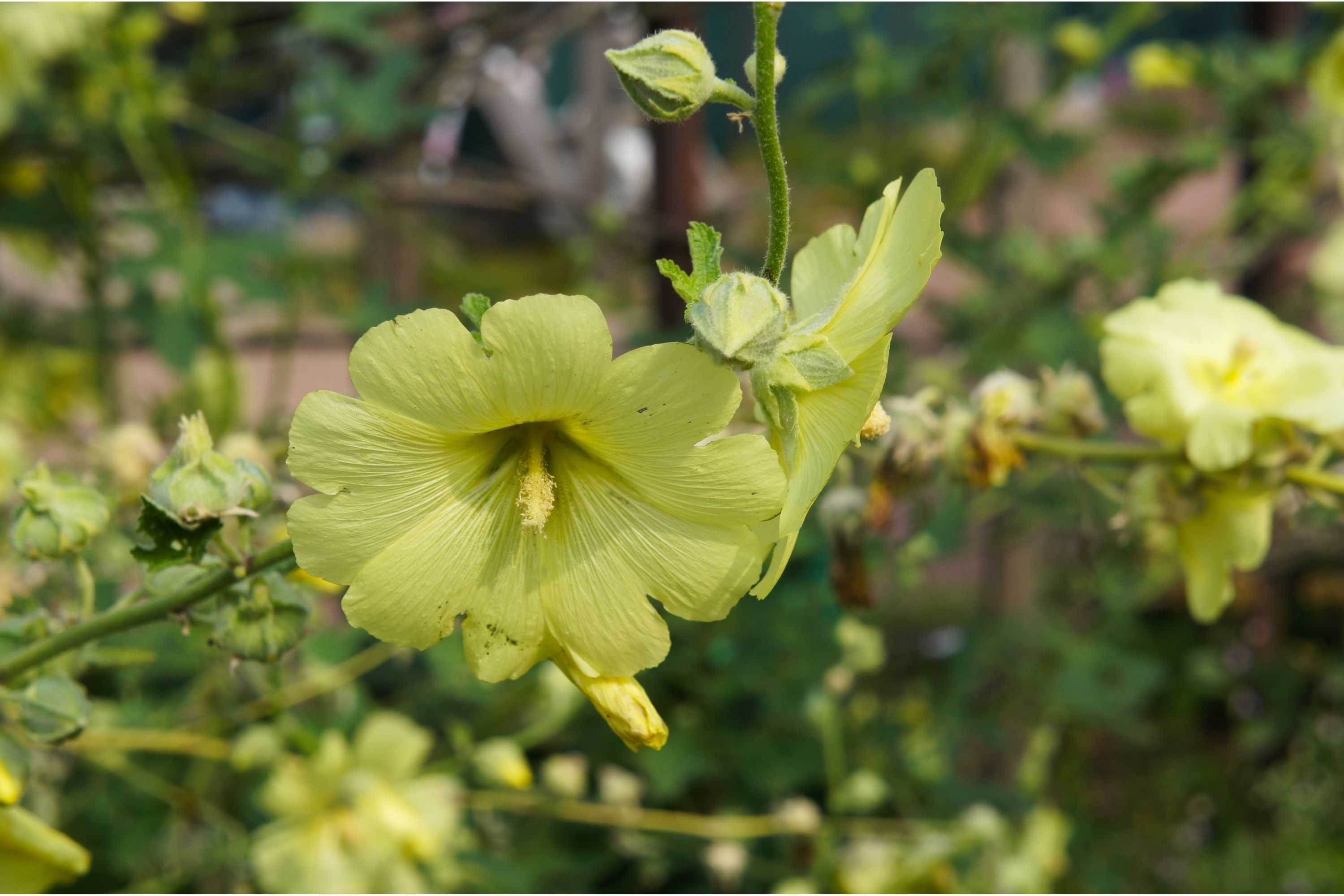Russian hollyhock
(Alcea rugosa)

Description
Alcea rugosa, the Russian hollyhock, is a species of flowering plant in the family Malvaceae. It is native to Ukraine, Crimea, south European Russia, and the Caucasus, and has been introduced as a garden escapee into Wisconsin and Maryland in the United States. It is resistant to Puccinia malvacearum rust, and hardy to USDA zone 4. Alcea is a genus of over 80 species of flowering plants in the mallow family Malvaceae, commonly known as the hollyhocks. They are native to Asia and Europe. The single species of hollyhock from the Americas, the streambank wild hollyhock, belongs to a different genus. Hollyhocks are annual, biennial, or perennial plants usually taking an erect, unbranched form. The herbage usually has a coating of star-shaped hairs. The leaf blades are often lobed or toothed, and are borne on long petioles. The flowers may be solitary or arranged in fascicles or racemes. The notched petals are usually over three centimeters wide and may be pink, white, purple, or yellow. The fruit is a schizocarp, a dry disc divided into over 15 sections that contain seeds. Hollyhocks are popular garden ornamental plants. They are easily grown from seed. Breeds with red flowers attract hummingbirds and butterflies. Cultivars have been bred, especially from A. rosea. They include the double-flowered 'Chater's Double', the raspberry-colored 'Creme de Cassis', and 'The Watchman', which has dark, nearly black, maroon flowers. The stems of hollyhocks can be used as firewood, and the roots have been used medicinally. Alcea species are used as food plants by the larvae of some Lepidoptera species including Bucculatrix quadrigemina and Vanessa cardui, the painted lady. The mallow flea beetle (Podagrica fuscicornis) is a pest that makes tiny holes in the leaves. Cutworms, aphids, and capsid bugs use the plant as a food source in hotter and drier conditions. A number of weevils use A. rosea as their host plant, including Rhopalapion longirostre, Alocentron curvirostre, and Aspidapion validum. The plants are also susceptible to the pathogenic fungus Puccinia malvacearum, the hollyhock rust. The Aoi Matsuri (Hollyhock Festival) is one of the three main festivals of the city of Kyoto. During the Victorian era, the hollyhock symbolized both ambition and fecundity in the language of flowers. The UK National Collection of hollyhocks is held by Jonathan Sheppard in Lincolnshire.
Taxonomic tree:







